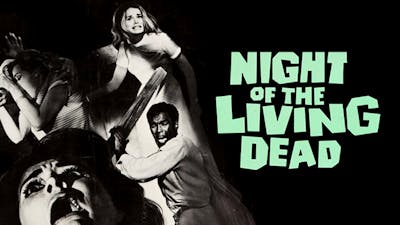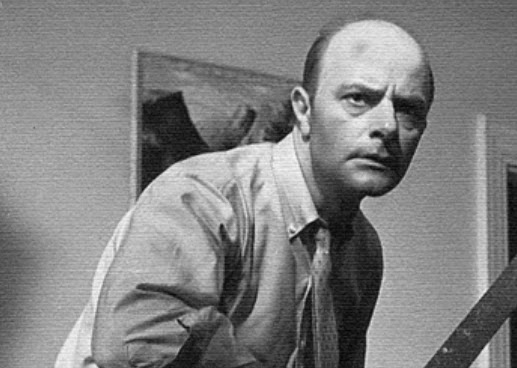Written by Creepythinman (!!!FACT!!!)
I was walking past the magazine section of Wal-Mart and saw something unusual, a 55th anniversary edition magazine of George A. Romero’s seminal 1968 classic Night of the Living Dead, not only one of the most iconic Horror movies ever made but IMHO a movie that split the Horror genre into two eras; Pre-NOTLD and Post-NOTLD.
In my review of Dan O’Bannon’s Return of the Living Dead posted here I go into detail about the impact NOTLD had but this magazine got me thinking what the movie was really about and the meaning behind it all.
I bought the magazine sight-unseen thinking that when I got home it would be a celebration of a landmark film that not only defined the modern zombie genre but influenced an entire generation of filmmakers and showed that Horror wasn’t something for children.
But being hopelessly naïve due to my excitement overriding my common sense and forgetting the political era that we’re in, instead of being about the movie itself, the magazine subversively uses it to extol the virtues of the lead character being a black male, because of course it does, however, due to liberals and SJW’s having a complete lack of self-awareness they don’t realize that Ben (played by the late great Duane Jones R.I.P.) is actually the villain of NOTLD.
I’ll explain;
Romero had stated numerous times that the only reason he cast Duane Jones was because he was the best actor for the role but, in hindsight, I think he only claimed this to not stigmatize NOTLD as a movie about race relations and instead focuses on Horror and how a lack of communication is what dooms the characters, a common thread in his movies.
The main conflict in the film stems from Ben and Harry Cooper, the latter a middle-aged white male, arguing on how best to deal with the situation they’re in and unable to come to an agreement on the right course of action.
I think Romeo cast Jones because if he had another Caucasian actor in the role it would have been just two white guys yelling at each other. But by having Ben be black it creates a subtext of bigotry simmering beneath the surface without being overt and left up to interpretation by the audience. Meanwhile Ben is portrayed as the “hero” who is more proactive and wants to find a way of escaping while Harry is considered the “villain” because of his aggressive attitude towards Ben which, due to the ethnic dichotomy between the two, is interpreted by audiences conditioned to assume that Copper is racially motivated despite never using any racial slurs.
Harry is under immense stress and why he’s so hostile while operating on pure logic and reason as his only motivation is to protect himself, his Wife Helen and their daughter Karen, the latter of which has been injured, along with Tom and Judy, two teens that have also taken shelter with them in the basement which Cooper asserts is the safest course of action and ultimately proven correct by the end of the film.
What people don’t realize is that, although not directed stated, Ben himself is racist as he rejects Coopers plan because he doesn’t want to be told what to do by a white man while luring Tom and Judy into a suicidal mission to take his truck, located outside, to the gas pumps nearby and fill it up so they can escape. But the truth is that he’s only thinking about himself and willing to sacrifice people to achieve his own selfish goal of self-preservation without regard to the safety of the people around him unlike Cooper who urges everyone to stay in the basement in order to protect themselves.
Being the late 1960’s, Tom and Judy represent the youth of that era and their rebellious streak which is why they reject Cooper’s plan because he’s an old white man and represents everything their generation hated. So they side with Ben, because he’s black along with white guilt over slavery, who’s only operating on emotion that appeals to them due to their lack of wisdom that comes with age which gets them killed.
Barbara is atypical of feminists of the time who fall apart when faced with actual adversity revealing how worthless they are when shit hits the fan as she is either in hysterics or near comatose and proves to be more or less useless during a crisis like most women in general.
Harry and Helen’s daughter Karen represents the children of the boomers who were willing to kill their parents and sell out everything their generation achieved in order to sustain themselves as we see in the symbolism of Karen murdering her mother and seeking sustenance by eating her Father.
The end of the movie has been a point of contention amongst people as some claim that Ben’s murder was racially motivated, despite seeing clearly that they didn’t know he was alive as he appeared shrouded in shadow and made no effort to identify himself.
In 1982 Romeo released Creepshow, the best Horror anthology film ever made, that he and Stephen King developed as a homage to EC Comics such as Tales from the Crypt which usually ended with either a shocking revelation or ironic twist as bad people would usually get their just deserts in an ironic manner.
This is why I assert that Night of the Living Dead is an EC comic style feature length film and Ben’s death was karmic justice by acting irrationally based on his racial bias that got people killed due to his own ego with the twist being that he ends up surviving the night by barricading himself in the basement, proving that Cooper was right all along, and why he shoots zombie Cooper three times out of anger because he was proven wrong, only for himself to be ironically killed as retribution.
Anywho, that’s my interpretation of Night of the Living Dead while I’ll leave you with the end credits score of the 1990 remake which is good but could never compare to the original…
!!!FACT!!!








.jpg)
